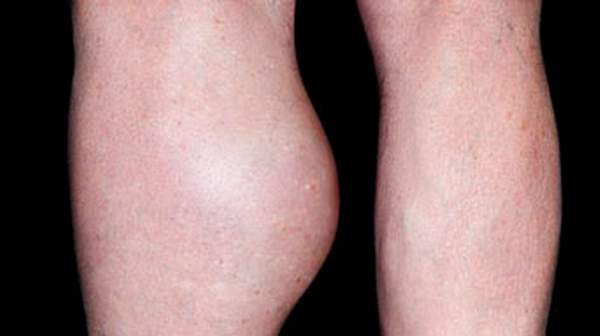What's in this article?
A Baker’s cyst is a fluid-filled cyst that causes a bulge and a feeling of tightness behind your knee. The pain can get worse when you fully flex or extend your knee or when you’re active.
A Baker’s cyst, also called a popliteal (pop-luh-TEE-ul) cyst, is usually the result of a problem with your knee joint, such as arthritis or a cartilage tear. Both conditions can cause your knee to produce too much fluid, which can lead to a Baker’s cyst.
Although a Baker’s cyst may cause swelling and make you uncomfortable, treating the probable underlying problem usually provides relief.
What causes a Baker’s cyst?
A Baker’s cyst is caused when excess joint fluid is pushed into one of the small sacs of tissue behind the knee. When this sac fills with fluid and bulges out, it is called a cyst. The excess fluid is usually caused by conditions such as rheumatoid arthritis or osteoarthritis that irritate the knee. It may also be caused by an injury.
What are the symptoms?
Often a Baker’s cyst causes no pain. When symptoms occur, they may include:
- Tightness or stiffness behind the knee.
- Swelling behind the knee that may get worse when you stand.
- Slight pain behind the knee and into the upper calf. You are most likely to feel this when you bend your knee or straighten it all the way.
Sometimes the pocket of fluid behind the knee can tear open and drain into the tissues of the lower leg. This can cause swelling and redness in that part of the leg.
How is a Baker cyst diagnosed?
Baker cysts can be diagnosed by the doctor’s examination and confirmed by imaging tests (either ultrasound, injection of contrast dye into the knee followed by imaging, called an arthrogram, or MRI scan) if necessary.
How is a Baker cyst treated?
Baker cysts often resolve with aspiration (removal) of excess knee fluid in conjunction with cortisone injection. Medications are sometimes given to relieve pain and inflammation.
When cartilage tears or other internal knee problems are associated, physical therapy or surgery can be the best treatment option. During a surgical operation, the surgeon can remove the swollen tissue (synovium) that leads to the cyst formation. This is most commonly done with arthroscopic surgery.





